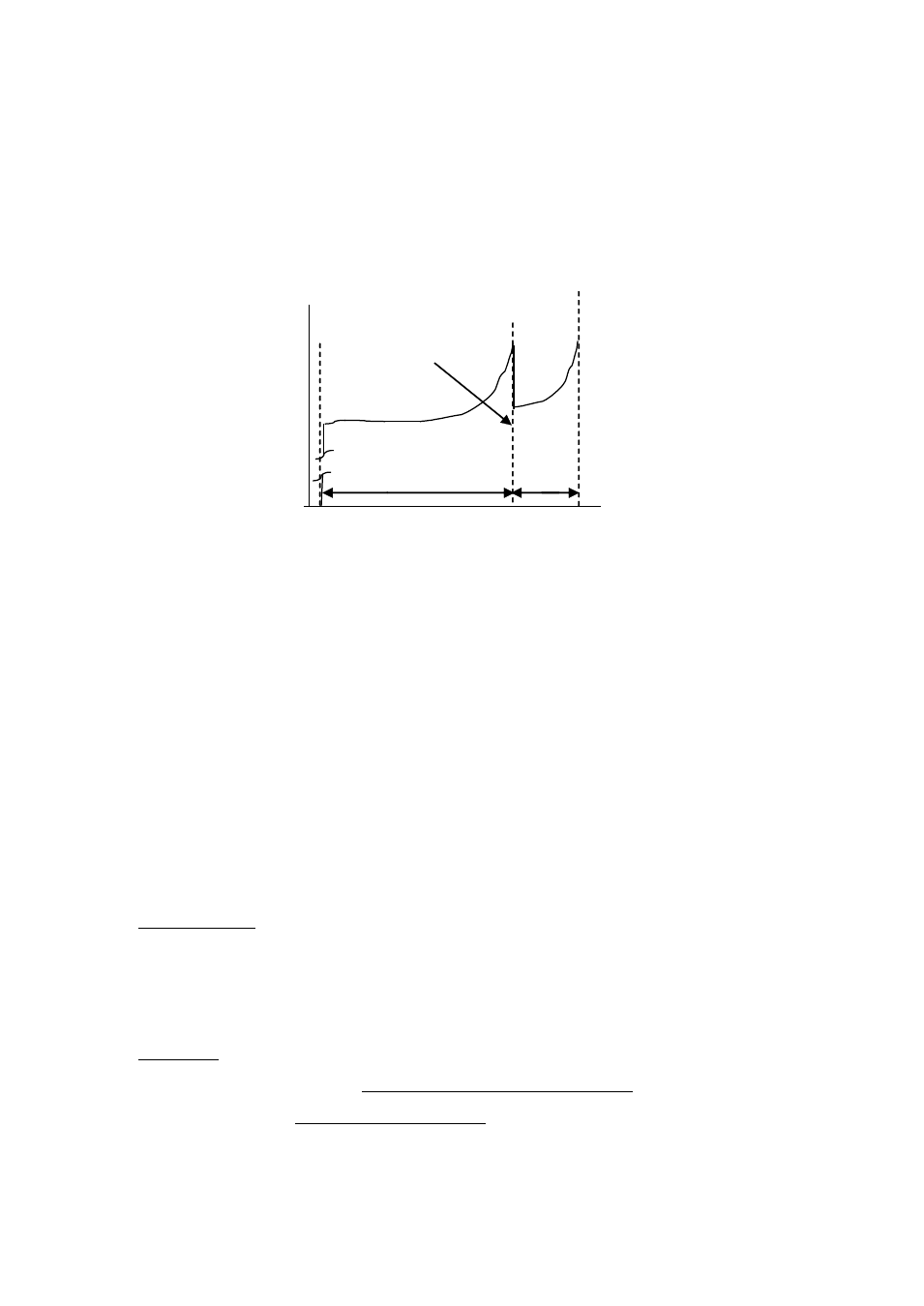K-Patents SeedMaster 2 User Manual
Page 46

7 CONFIGURE SeedMaster 2
46
46
growth (by volume) becomes really fast, resulting in sharply increasing power consumption up to the end of
the strike (point 4).
Fig. 7.7 b) shows another similar trend, which differs from the previous one only in its 0 to point 1 section. In
this case it is interesting to observe, that having completed seeding of the pan (point 1), despite an expected
increase a considerable drop in motor consumption can be observed. This kind of change can be attributed
to a fairly thin layer of syrup flow above the calandria during syrup concentration (from 0 to 1), which
becomes wider as soon as syrup feed increases just after having seeded the pan, resulting in the observed
drop in consumption.
Finally, in Fig. 7.8 typical motor consumption trend is shown, when the stirrer motor operates at 2 different
speeds.
P (kW)
PHASE 2 START
PH. 2
PHASE 1 Low
High speed
speed
Time
Fig. 7.8 Typical trend of a double-speed motor
Summary:
1. When stirrer motor consumption is being used as “THIRD INPUT”, its actual use can start only after
point 2, that is when crystal content has already increased at least to some low limit value.
2. From the start of a strike up to seeding (“Syrup concentration”, 0 to 1) there is no need for any
“THIRD INPUT”. Concentration from the refractometer and temperature data are enough to
calculate all output parameters.
3. During the period of “Graining” (1 to 2), or during the “High speed” operation in case of a double-speed
motor, an involved simulation of crystal growth is being used to calculate all required output
parameters.
4. During “Boiling” (2 to 3), and “Boiling up” (3 to 4), or “Low speed” operation in case of a double-speed
motor, motor consumption data are used effectively.
5. Having completed the strike the SeedMaster 2 program, by making use of data acquired at the end of
the strike, adapts some parameters to be used in the next strike during the crystal growth
simulation.
NOTE:
The use of stirrer motor power or current consumption as “Third input” is limited to batch vacuum
pans operating without strike cut(s), that is without discharging some part of the massecuite before
the end of the strike. The trend of motor consumption data should look like one of those shown in
Fig. 7.7 or Fig. 7.8.
CONFIGURATION
Configuration needs 17 data presented by scrolling the parameters on the screen. These are used to
calculate the last 2 parameters listed at the end of the parameter list.
•
To select the appropriate parameter use the UP/DOWN ARROW (scrolling).
•
To select YES or NO use CHANGE.
•
After entering / changing data use ACCEPT, or ENTER.
Terminology:
PHASE 1 END
: This is the END of the first section (phase) of the strike, during which motor
consumption data are useless (point 2 in Fig. 7.7).
PHASE 2 START
: START of low-speed operation, when a double speed motor is being used.
Typical crystal content: 35…45 % by volume (Fig. 7.8).
